We’ve been keeping ourselves busy lately—working on our next cookbook, roasting chestnuts, and harvesting olives from our small grove. This time of year, both in Tuscany and across Italy, is all about olio nuovo, the fresh, new olive oil that bursts onto tables with its vibrant, peppery flavor.
Olio nuovo is a precious ingredient, but is also a celebration and a ritual. Drizzled on a slice of toasted bread, it’s a taste that defines autumn in Italy—a reminder of tradition and of the connection we have with the land.
“Olio nuovo e vino vecchio.” New oil and old wine.
This saying pretty much sums up the Italian philosophy on these two culinary staples. If wine, properly stored, as a general rule is better the older it gets, with extra virgin olive oil, the opposite is true.
As time goes by, even in a matter of months, the aromas slowly fade, the flavors flatten out, and the health benefits diminish. This explains why here in Italy, we all get excited when the season of olio nuovo, the first, freshly pressed olive oil, finally arrives.
I recently shared my profound love for extra-virgin olive oil with
for her recent Special feature: New ways with ingredients we love. She asked me and other talented women to share our favorite ingredient and why it holds such a prized place in our kitchens. Mine had to be olive oil.A top-quality bottle of this golden elixir is still one of my favorite gifts, to make and receive. I always keep at least two bottles in my pantry: one for everyday cooking and a special one reserved for finishing and seasoning dishes.
Read also what the other cooking experts, such as
, and Maya Kaimal shared.Are you inspired to celebrate the season of olio nuovo? Try drizzling it over warm, toasted bread or a hearty crostone with cavolo nero and cannellini beans—simple dishes that let this fresh olive oil shine. Or, share your own ways of enjoying olive oil at home! Comment or reply to this email or tag me on Instagram to let me know how you’re savoring the harvest season.
Harvest Traditions
November might be considered a gloomy month—the days are getting shorter, rain and mist are a constant companion. But it is also a month brimming with traditions and reasons to celebrate.
On Saint Martin’s Day, on November 11, the new wine, known as vino novello, flows abundantly, making everyone a little tipsy. This is an easy-drinking, low-tannin wine with bright, lively color and a young, fresh flavor that marries beautifully with roasted chestnuts, another seasonal treat.
Then, there’s the olio nuovo. Throughout Italy, olives are typically harvested from October through December, depending on the region, the climate, and the weather. November, though, is often the preferred month1.
This year, we picked olives during the last days of October. With our small olive grove—just over thirty trees—we do everything by hand, waiting patiently for a stretch of sunny days. The olives must be dry when harvested; otherwise, they risk molding while waiting their turn at the local frantoio, the olive oil mill.
We gently rake each tree, letting the olives tumble down onto nets we’ve carefully laid out beneath. As you gather olives, there’s an art to predicting the harvest. You need a rough estimate to book your spot at the frantoio. When will you finish? How many crates will you fill?
When it’s finally your turn, you bring the olives to the frantoio, whether it’s a festive day or in the quiet hours of night. The mill never really sleeps. Here, the olives are carefully guarded until ready to press. What flows out is the essence of the olive2, their raw, unfiltered juice—a luminous green elixir that glistens with grassy, peppery, pungent notes. It’s a taste so fresh and alive that it’s nothing short of magic.
Our 20 crates of olives—for a total of 400 kg of olives—yielded just 34 liters of extra virgin olive oil this year, a humble harvest affected by prolonged rainy days. Rain can be a friend or foe to olive growers: while essential for growth, too much of it close to harvest can dilute the oil yield. Still, each drop of this season’s olive oil feels even more precious, a testament to the resilience of the trees and the dedication that goes into every liter.
How to Recognize Olio Nuovo
If you are not so lucky as to have an olive grove—or neighbors and friends who are happy to share their freshly pressed oil—here are a few tips for recognizing olio nuovo.
Look at the harvest date on the back label of the bottle: It should be late in the most recent year, from October to December. The shelf life is usually 18 months, but you can really call it olio nuovo just for about 3 months from harvest, as this is when it retains that mix of bitterness, pungency, and fruitiness that you expect from a freshly pressed olive oil.
The oil will be cloudy, as it is unfiltered. The color, however, does not signify quality, as it can range from green to yellow, depending on the type of olives. In Italy alone, there are more than 300 different kinds of olive trees.
Olio nuovo—and any extra virgin olive oil—is not meant to be saved for special occasions. Use it daily, and freely, and store it correctly: in a dark bottle in a cool, dark cupboard, never next to your stove.
Tasting the Harvest
As soon as you are handed your olio nuovo, run home to toast some bread. Quickly rub it with garlic and douse it in olive oil: this is the best way to appreciate the precious gift you have just been given by Mother Nature. This is what they call fettunta in Florence, meaning “greased slice of bread”. It is uncomplicated, straightforward, and highly effective: the hot toasted bread immediately opens up the oil’s aromatic bouquet of peppery, grassy, bitter notes in all their glory.
Another way of appreciating the freshly pressed olive oil is to pour it copiously over a crostone with cavolo nero and cannellini beans.
Cook the cavolo nero for longer than you would expect, to soften its fibrous leathery leaves, until it surrenders in a buttery mess. Don’t drain it completely, as its flavourful cooking water will soften the toasted bread rubbed with garlic. Top each slice of bread with cavolo nero and a generous spoonful of cooked cannellini beans, then season with salt and freshly ground pepper, and drizzle with your best olive oil.
A pinzimonio, pairing the oil with a bowl of crisp winter vegetables for dipping, is equally satisfying. Carefully wash a selection of fennel, carrots, celery hearts, and fresh onions, and leave the olive oil in its purest form. Forget the vinegar; the only concession allowed is a pinch of salt.
There are also regional habits, depending on each region’s availability of local products and the distinct taste and aroma of their olio nuovo. In Puglia, it’s a perfect match with their ubiquitous broccoli rabe; in Abruzzo, it goes into spaghetti aglio, olio, e peperoncino, with a sprinkling of the local dried sweet peppers for extra flavor. In Umbria, it is drizzled on a local soup, hearty with pulses and grains.
Although I’m an advocate of cooking—and baking, and even frying—with extra virgin olive oil, when it comes to olio nuovo, I prefer to enjoy it raw, so as not to lose its intense, piquant notes. I use it as a seasoning, drizzling it over soups, salads, or hearty crostoni.
Want to read or listen to more about olive oil?
Why is extra virgin olive oil good for you? from the blog archive
EP24 - In conversation with: Frantoio Pruneti about Extra Virgin Olive Oil
My apple olive oil cake, on the blog
When I was younger—around 30 years ago—olive harvest season fell at the tail end of November, sometimes even in early December. We bundled up in scarves and thick jumpers, bracing against the chill that marked the arrival of winter in Tuscany. But times have changed.
On one hand, we’ve learned that harvesting olives earlier, when they’re more green than black, gives the oil those prized green, peppery notes we’ve come to love. Yet, climate change has also reshaped this tradition. Now, we’re out in the groves in October, wearing t-shirts instead of wool sweaters, feeling the sun on our arms instead of that sharp, crisp cold.
The olive oil mill at Tenuta Mensanello is a true model of sustainability: nothing goes to waste. After the olives are pressed, even the pits are repurposed into wood pellets to fuel the central heating, providing warmth to the estate during the cooler months. The olive paste, left over from pressing, is transformed into a rich, natural fertilizer for their fields that bore the olive trees.




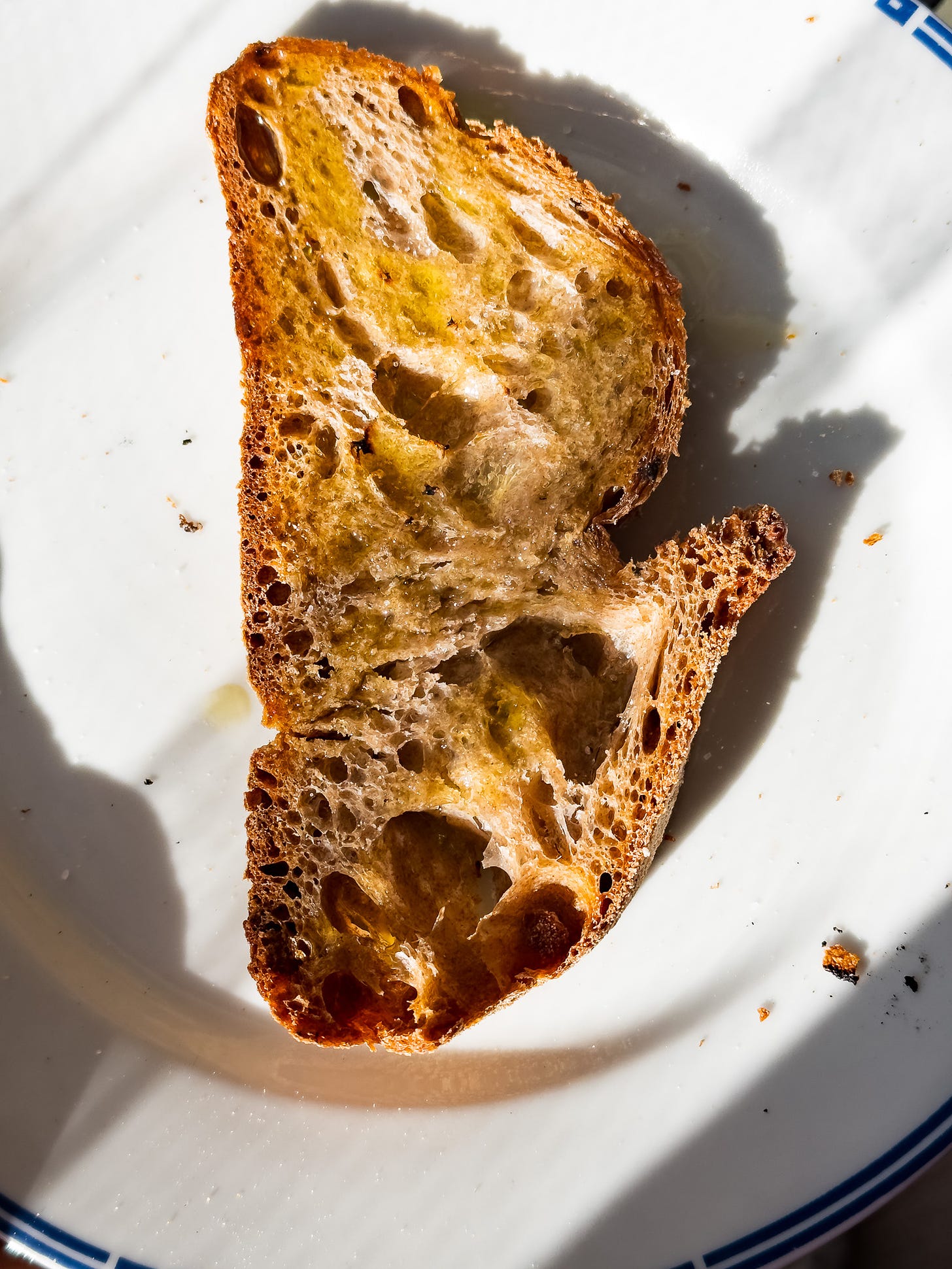

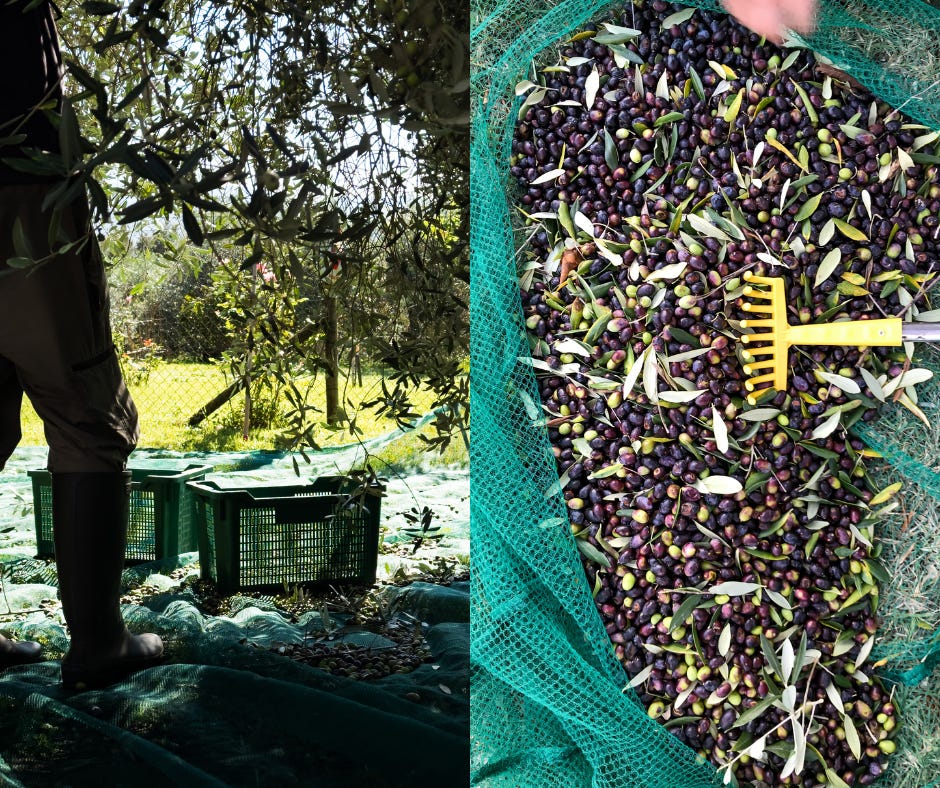
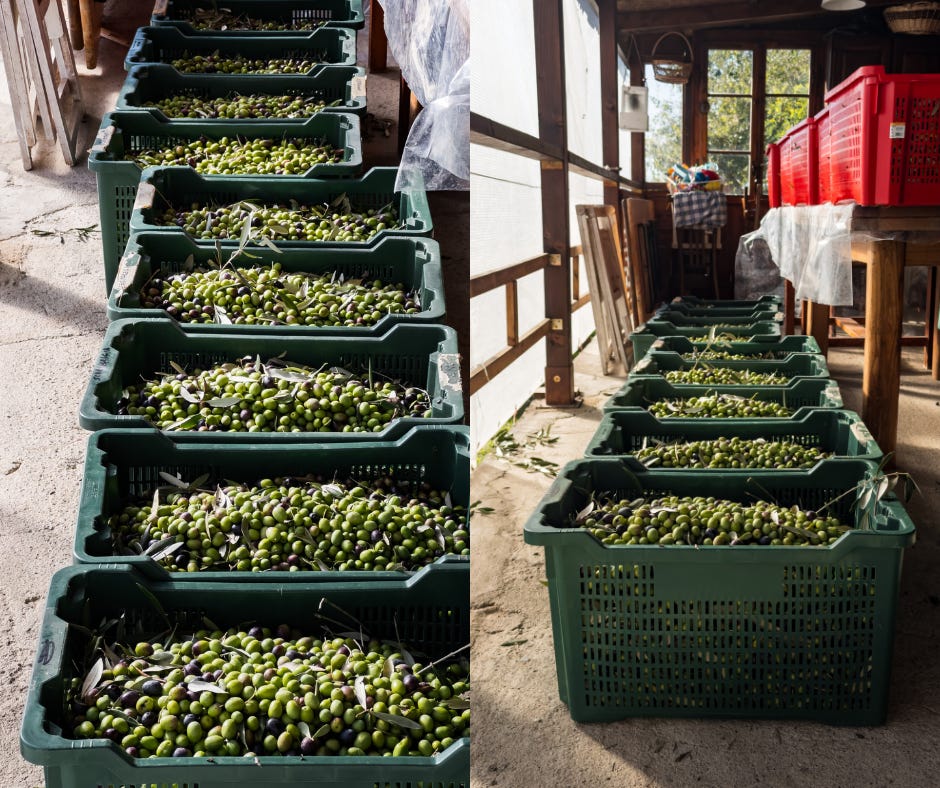
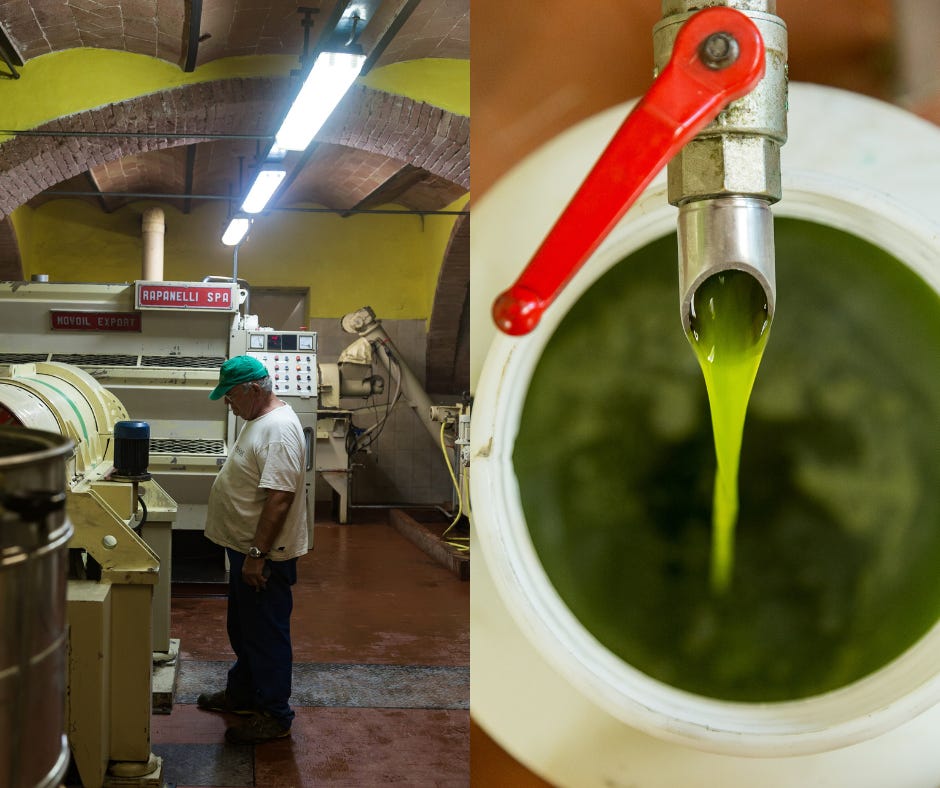
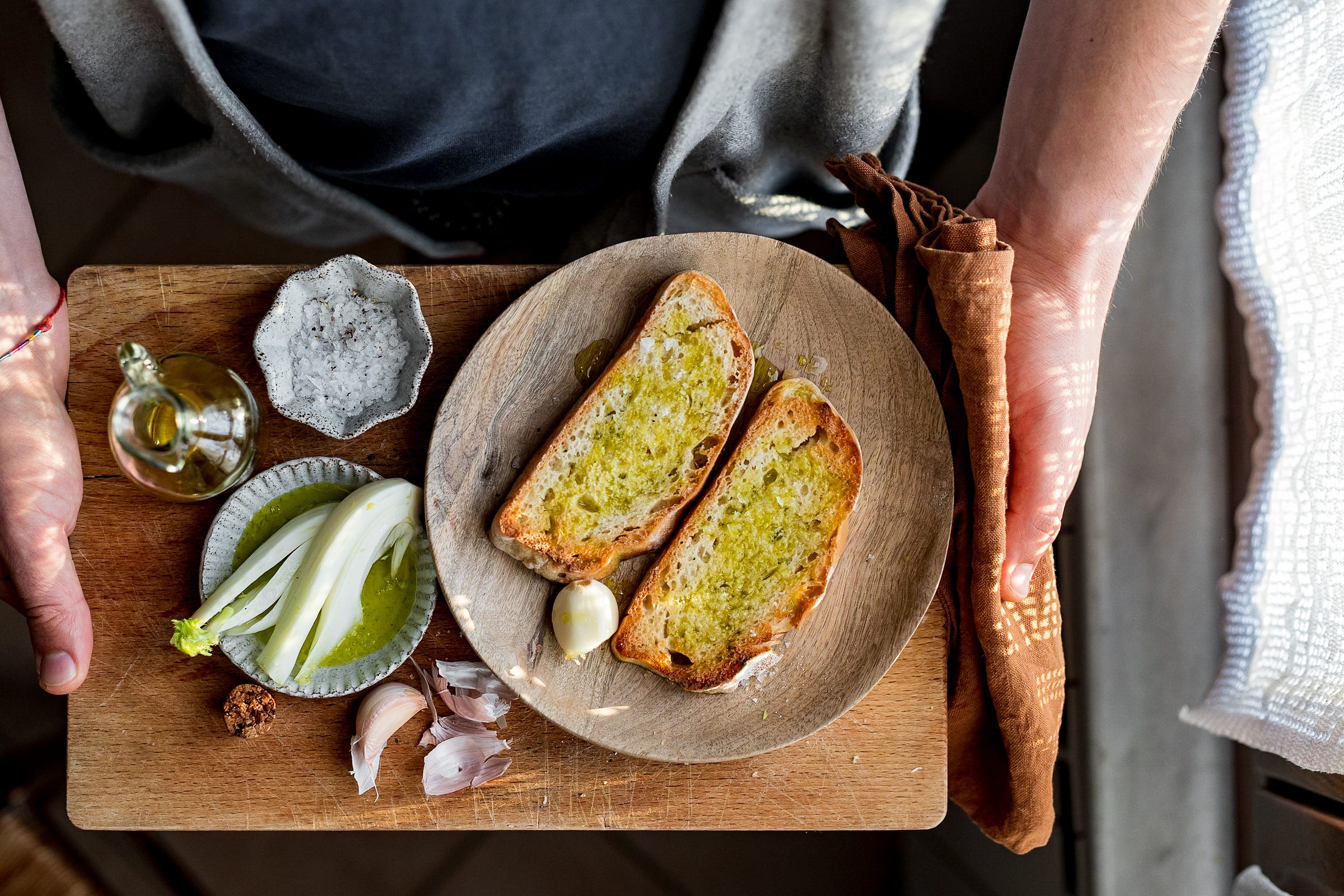


This is so interesting. I will have to see if there is some in America.
Just a few days ago we did the same, and had our “olio novo” in front of the fireplace where we previously toasted the sourdough bread, then we rubbed the bread with the garlic we grew in our garden and doused it with the fresh, green, piquant oil pressed just a few hours earlier.
And of course there also were red wine and chestnuts!
To us, Tuscan folk, this is a family ritual that is as special as Christmas - it not even more 🥰